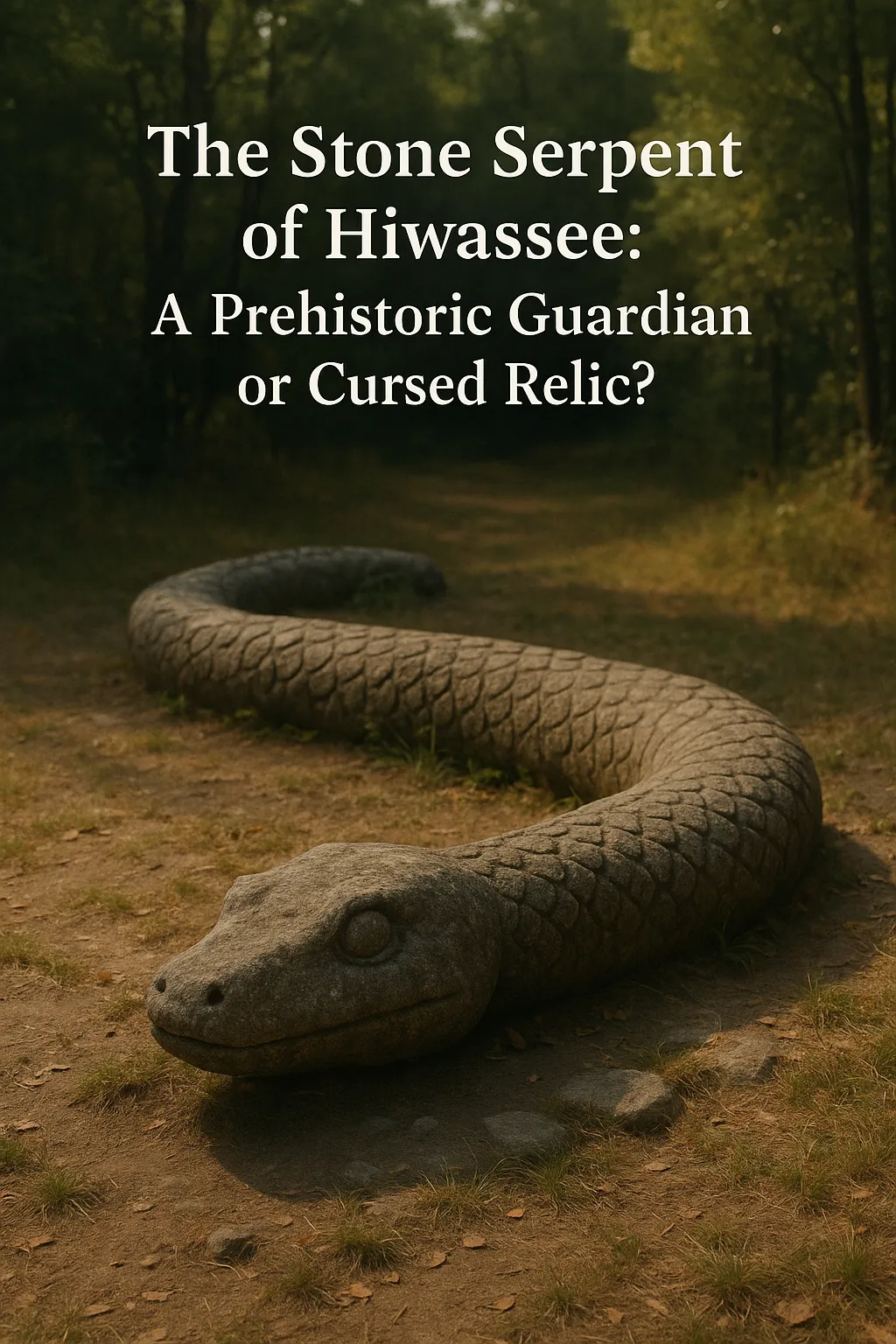
The Stone Serpent of Hiwassee: A Prehistoric Guardian or Cursed Relic?
The Stone Serpent of Hiwassee: A Prehistoric Guardian or Cursed Relic?
Introduction: A Carving That Watches
High above the Hiwassee River, along a secluded ridge in East Tennessee, lies a stone carving that has puzzled locals for generations. Known as the Stone Serpent of Hiwassee, this sinuous figure etched into the rock is said to represent a guardian—or perhaps a warning. Elders in nearby communities claim that those who ignore its message invite misfortune, while archaeologists and historians debate whether it is prehistoric art, a Cherokee spiritual symbol, or something altogether stranger.
Chattanooga Valley and the surrounding East Tennessee region are filled with similar enigmas—stone faces, hidden relics, haunted houses, and ghostly apparitions. But the Stone Serpent stands out as one of the most mysterious, blending ancient history, folklore, and paranormal speculation in a single, winding form carved into the ridge.
The Legend of the Stone Serpent
Local tradition holds that the serpent was carved thousands of years ago by a prehistoric culture, long before European settlers arrived. According to lore:
Guardian of the Land: The carving serves as a warning to intruders—protecting sacred sites, burial grounds, or hidden resources.
Curse for the Reckless: Elders warn that disrespecting the carving, attempting to remove stones, or disturbing the ridge can lead to accidents, illness, or death.
Spiritual Symbolism: In Cherokee mythology, serpents are often seen as protectors or messengers of spiritual power, linking the carving to a broader cultural tradition.
The Stone Serpent is more than just a rock—locals swear it exudes energy, and visitors often report feeling watched or uneasy when near it.
Eyewitness Accounts: Feeling the Serpent’s Presence
Over the decades, various hikers, historians, and paranormal enthusiasts have described strange experiences near the ridge:
The Hiker’s Chill: One visitor reported an inexplicable chill, despite warm weather, when standing directly in front of the carving.
Shadows That Move: Campers claim shadows along the ridge appear to shift independently, forming shapes that resemble a coiled serpent.
Whispers and Warnings: Some hikers say they hear faint whispers—indistinct, yet urgent—especially when touching the stone or attempting to photograph it too closely.
These accounts lend the carving an aura of mystery, suggesting it may be more than simple rock art.
Archaeological and Historical Perspectives
Scholars have examined the Stone Serpent to uncover its origins:
Prehistoric Petroglyphs – Some archaeologists argue the serpent is a prehistoric carving by a Mississippian or earlier culture, potentially serving a ceremonial or territorial function.
Cherokee Spiritual Artifact – Others suggest the carving may have been maintained or added to by Cherokee communities, representing protection, healing, or spiritual power.
Natural Formation – Skeptics claim the “serpent” may be an unusual natural erosion pattern, enhanced by human imagination and cultural storytelling.
Despite these theories, no definitive dating or excavation has confirmed its origin, leaving the carving shrouded in mystery.
The Curse or Guardian Theory
Local elders often insist the serpent serves both as a guardian and a curse:
Protecting Sacred Land: Those who venture off the trail or disturb the area reportedly experience misfortune or sudden, inexplicable accidents.
Spiritual Lessons: Some believe the carving teaches respect for nature and the spirits of ancestors who once inhabited the land.
Ongoing Mystery: Visitors occasionally report seeing glowing eyes at night along the ridge or hearing faint hissing sounds, reinforcing the idea of a living, protective presence.
Chilling Details and Unknown Facts
The Serpent’s Path: The carving extends along the ridge for over 50 feet, creating the illusion of movement when viewed from a distance.
Connection to Other Sites: The ridge is near other ancient Cherokee and Mississippian ceremonial sites, suggesting the serpent may be part of a larger spiritual network.
Disappearances and Accidents: Locals report that those who linger too long or attempt to remove stones have later suffered accidents, though anecdotal evidence is hard to verify.
Top 5 Eerie Appalachian Sites Near Chattanooga Valley
Stone Serpent of Hiwassee – Prehistoric guardian or cursed relic?
Stone Faces of Red Clay – Mysterious carvings that may watch the living.
Phantom Choir of Moccasin Bend – Ethereal voices echoing across the river.
Black Lantern of Suck Creek – Ghostly miner light flickering in abandoned trails.
Devil’s Rocking Chair, Raccoon Mountain – Sit at your peril.
Visiting the Stone Serpent
The ridge is accessible to experienced hikers and adventurers. Paranormal enthusiasts and folklore scholars often visit to document the site, though locals advise caution:
Avoid removing stones or touching the carving excessively
Visit during daylight and preferably with a guide familiar with the ridge
Respect local property and follow hiking safety protocols
Whether seeking history, paranormal activity, or simply the thrill of exploring a mysterious site, the Stone Serpent remains a magnetic and unsettling destination.
Conclusion: Guardian, Curse, or Mystery?
The Stone Serpent of Hiwassee continues to haunt the ridge above the Tennessee River. Is it a prehistoric guardian, a Cherokee spiritual artifact, or simply a rock formation that inspires fear and imagination? Perhaps it is all of these at once—a testament to the power of legend, history, and the unknown.
Have you encountered the Stone Serpent or felt its presence along the Hiwassee Ridge? Share your experiences in the comments, explore more local legends, and follow us for chilling tales from Chattanooga Valley and the Tennessee Highlands.
